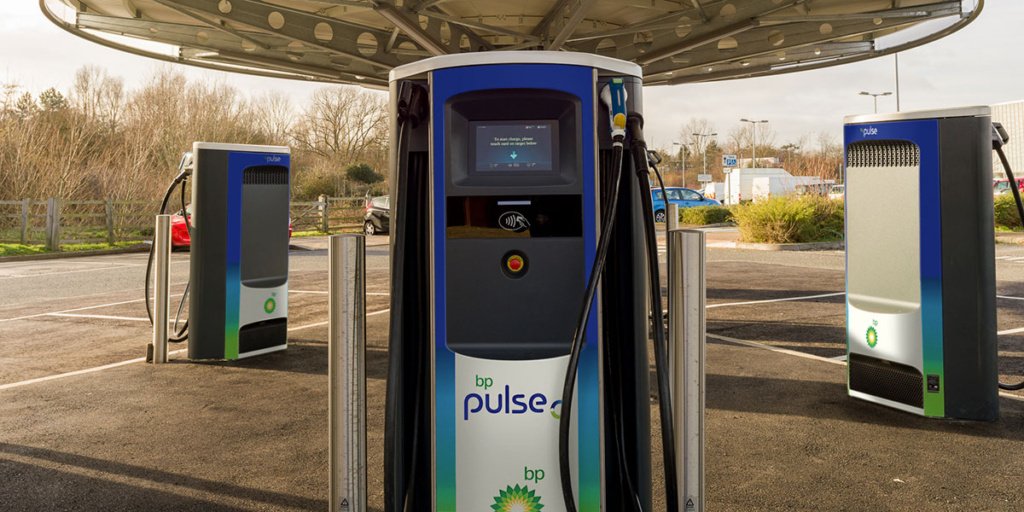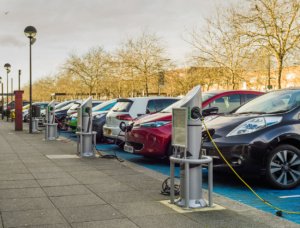Matteo de Renzi, CEO of bp Pulse, explains why the debate over the suitability and progress of electric vehicle charging networks needs to be re-framed.
 Data from Zap-Map shows that there are currently close to 40,000 charging ‘connectors’ in the UK, stationed at more than 14,000 different locations. Some commentators argue that we simply need to increase these numbers, and that this alone is the best measure of network quality. However, such a crude analysis doesn’t account for what really matters when it comes to making EV ownership as easy and seamless as possible for all UK motorists.
Data from Zap-Map shows that there are currently close to 40,000 charging ‘connectors’ in the UK, stationed at more than 14,000 different locations. Some commentators argue that we simply need to increase these numbers, and that this alone is the best measure of network quality. However, such a crude analysis doesn’t account for what really matters when it comes to making EV ownership as easy and seamless as possible for all UK motorists.
Using network size as the only barometer for progress, or as the main basis for comparison between service providers, is an outmoded and overly simplistic approach. We need to re-frame the narrative and start looking at the metrics that really matter.
When considering the UK public charging network, we need to look at its suitability to the user. This means considering the location and geographical spread of charging points, as well as examining the power supply and operational support available across the network.
After all, having 100 under utilised 3kW slow chargers within a one-mile radius of one another in a borough of London might bolster a network’s headline numbers, but what is the true value compared to two or three strategically positioned 150kW ultra-fast chargers that get used virtually all day, every day?
 There are two important points. The first is the significance of location and geographical coverage. Our research tells us that the type of charger you need depends on the situation. If I need to quickly charge my car then an ultra-fast 150kW charger (UFC) on one of our retail sites is incredibly useful. But if I’m going to the cinema, I don’t need to charge that fast the car will be charged before the adverts have finished. Here, a 7kW charge point could add 60 or so miles of range during the movie. Overnight charging on the street can be slower still. What we really need are different speeds for different needs.
There are two important points. The first is the significance of location and geographical coverage. Our research tells us that the type of charger you need depends on the situation. If I need to quickly charge my car then an ultra-fast 150kW charger (UFC) on one of our retail sites is incredibly useful. But if I’m going to the cinema, I don’t need to charge that fast the car will be charged before the adverts have finished. Here, a 7kW charge point could add 60 or so miles of range during the movie. Overnight charging on the street can be slower still. What we really need are different speeds for different needs.
If we want nationwide EV adoption, we must also ensure that certain areas of the UK are not left behind. According to Zap-Map data, there are more charge points in Greater London than in Scotland, Wales, Northern Ireland, the North East of England and Yorkshire and the Humber combined. At the moment, this correlates with levels of EV ownership in each region, but as we move towards 2030, levels of EV uptake will ramp up across the country. Therefore, we’re investing nationwide and partnering with local authorities the length and breadth of the country.

A decade has passed since the first public chargers were installed, and technology has evolved. This means that a there is a significant amount of legacy infrastructure in the UK that is no longer fit for purpose – either because it no longer works, or it doesn’t meet the needs of today’s EV driver. Clearly, a poorly functioning charge point is no better than no charge point at all, which is why bp Pulse is making £2 million available to help local authorities upgrade legacy infrastructure with vastly superior equipment.
Of course, when the first public charging units were installed, nobody knew how and when the EV market or charging technology would evolve. However, with a decade of experience on our side, we now know what motorists need from public EV infrastructure. Local authorities now face a challenge – to shift the approach to one where the size of your network is less important than what it can do. At bp Pulse, we’re collaborating closely with the public sector partners who understand that public EV charging infrastructure is much more than just a numbers game.
bp Pulse is the new name for bp Chargemaster and the Polar network
Latest News







